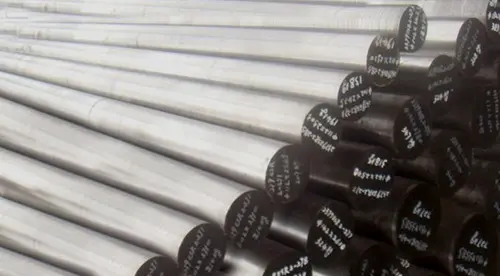Advantages of High Speed Steel
High speed steel is a popular material often used to create cutting tools, particularly drill bits. Whether you’re creating tools for the end user or redesigning your manufacturing tooling, here are some common advantages of high speed steel.
High Speed Steel Hardness

This feature alters the performance of your steel in a number of ways. A hard metal bar, sheet or plate requires durable tools to precisely process. However, once your high speed steel component has an edge, its inherent hardness extends the cutting lifetime. This is particularly true in high heat situations.
Another benefit of steel with increased hardness is its regrindability. Once your drill bit or other cutting tool has lost its edge, it’s easier to grind and sharpen than other steel alloys. This process ensures a long life for your tooling.
High-Speed Performance
Drill through thick materials with confidence thanks to the high-speed performance of this steel. Cutting through materials at high speeds is one of the most important advantages of high speed tool steel. You can enjoy this benefit due to the alloy’s unique combination of hardness, wear resistance and high-temperature capabilities. High speed steel can offer speeds up to seven times that of traditional alloys.
Wear Resistance
A tough blade is likely to hold its edge longer. Even in high-heat or high-pressure situations, you can expect your high speed steel components to hold their edge and outperform other alloys. Some manufacturers choose to coat high speed steel to add another layer of wear resistance.
High-Temperature Capabilities
One of the final advantages of high speed steel is its high-temperature capabilities. While every alloy has slightly different heat levels, you can expect many high speed alloys to reach operating temperatures of 650 degrees.
Types of High Speed Steel
There are many types of high speed tool steel to choose from. Compare these common types and work with our team at Griggs Steel to find the optimal alloy for your particular application.
Cobalt
The most common example of cobalt high speed steel is M42. This particular type of cobalt steel includes an additional 8% cobalt. This increases the heat resistance and red hardness. These advantages of high speed steel with cobalt reduce cycle times for manufacturing tools.
Cobalt tool steel is commonly used in end mills, broaches, reamers, drills and other manufacturing processes. This type is relatively affordable, particularly when you factor in the reduced downtime due to shorter cycles.
Tungsten
When iron-based high speed steel is combined with chromium, carbon, molybdenum, vanadium and/or tungsten, it creates a dynamic tool steel option. Choose either T type or M type tungsten high speed steel for improved wear resistance, hardness and temperature capabilities. Tungsten T type alloys include between 12 and 20% tungsten, while M type includes as little as 1.25% tungsten.
CPM REX M4
Compare CPM REX M4 with other alloys to enjoy some of the greatest advantages of high speed steel. This steel is commonly used in manufacturing situations to create taps, punches, header tooling and form tools. It includes multiple elements, including tungsten, vanadium, molybdenum, manganese, chromium and silicon. M4 high speed steel is commonly modified with a heat treatment service. Use austenitizing, gas quenching or annealing to modify the hardness, edge retention and other critical features for your manufacturing application.
